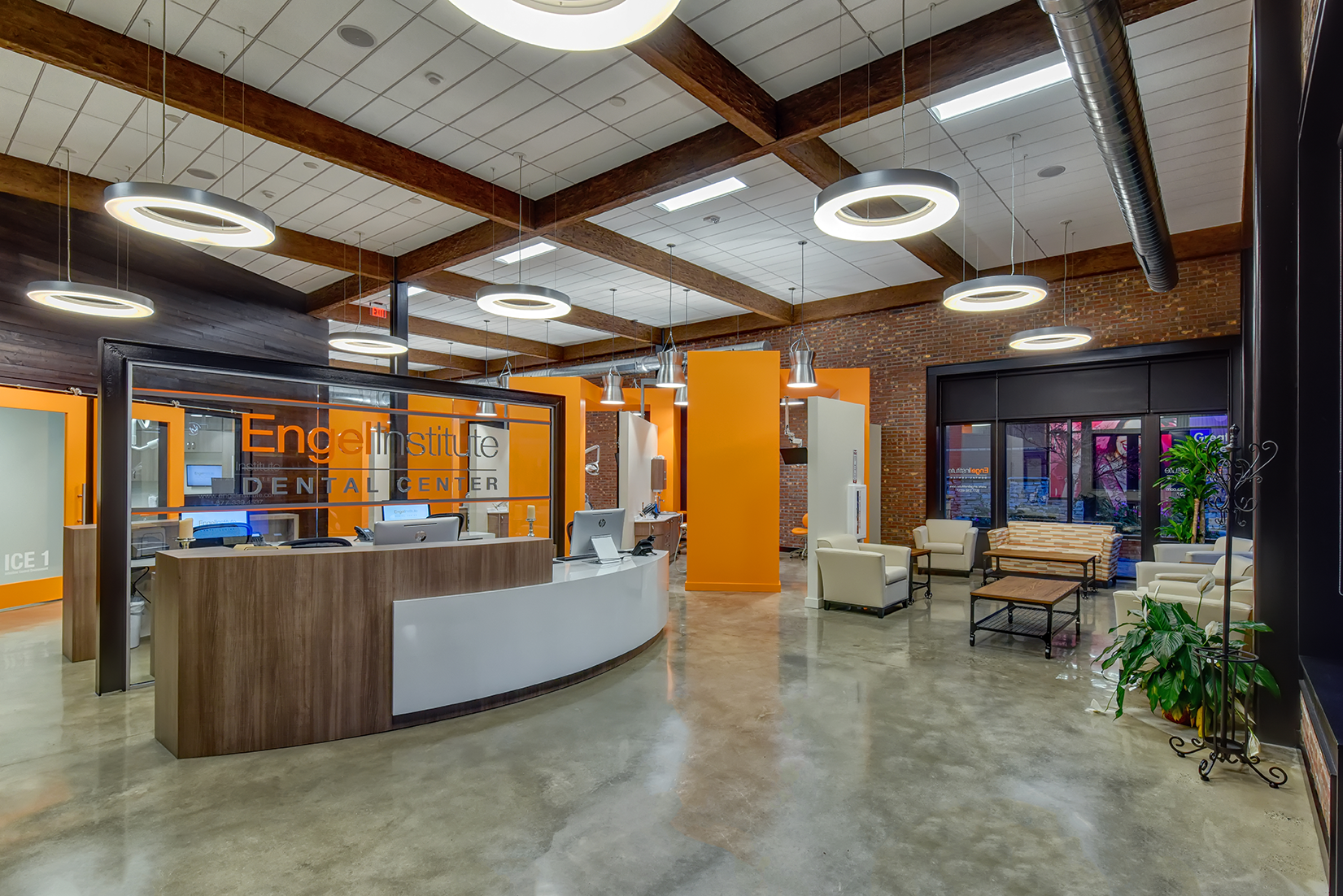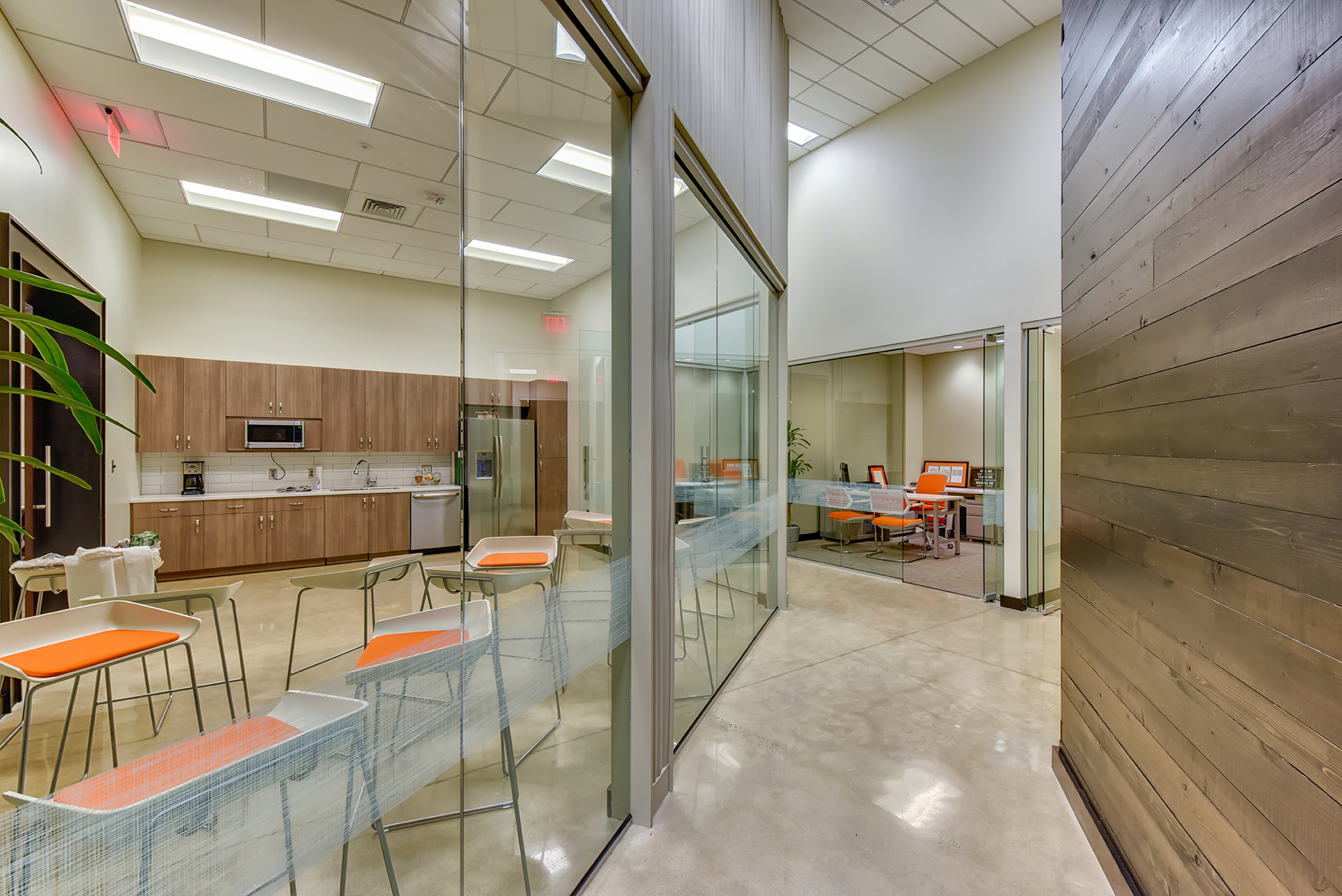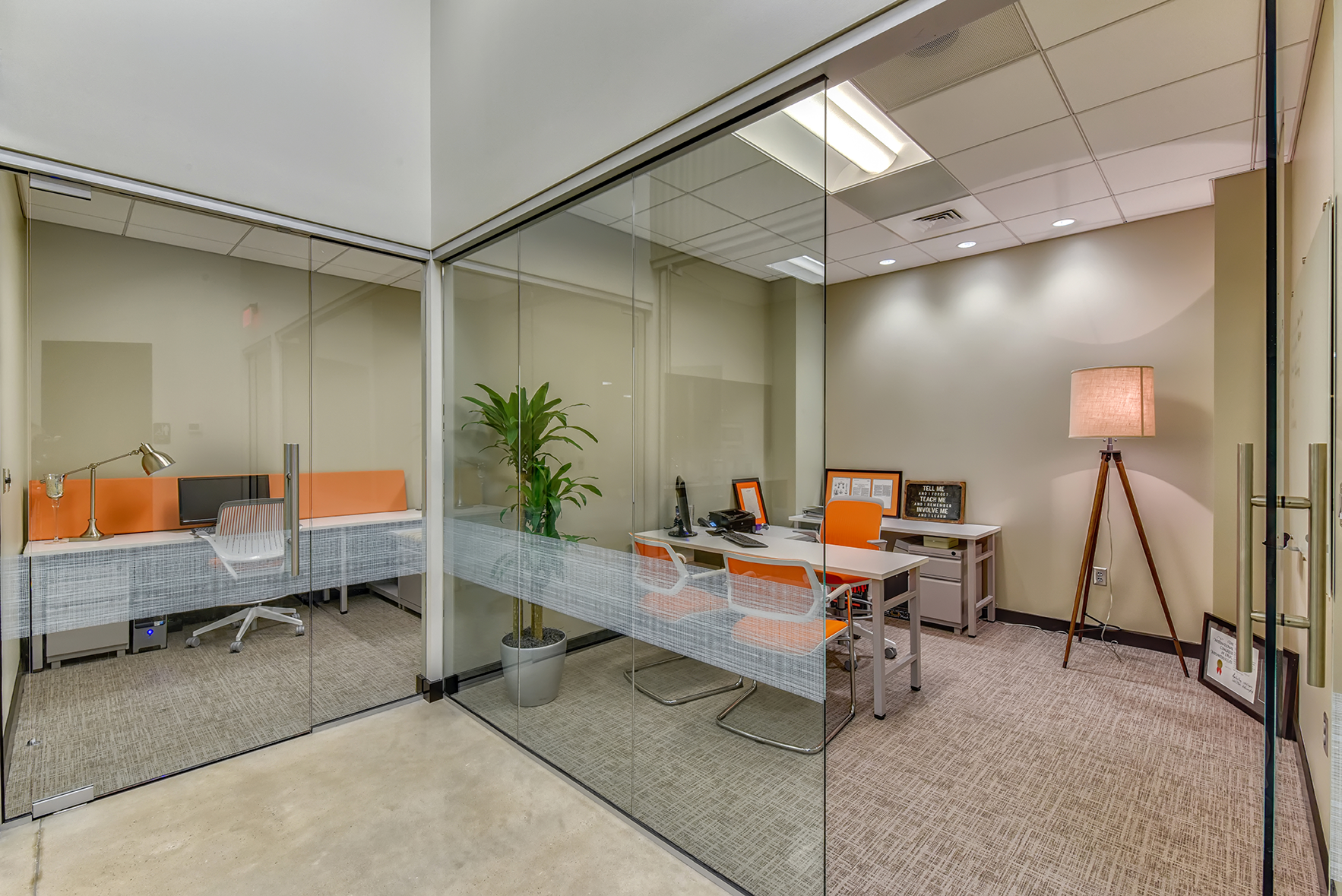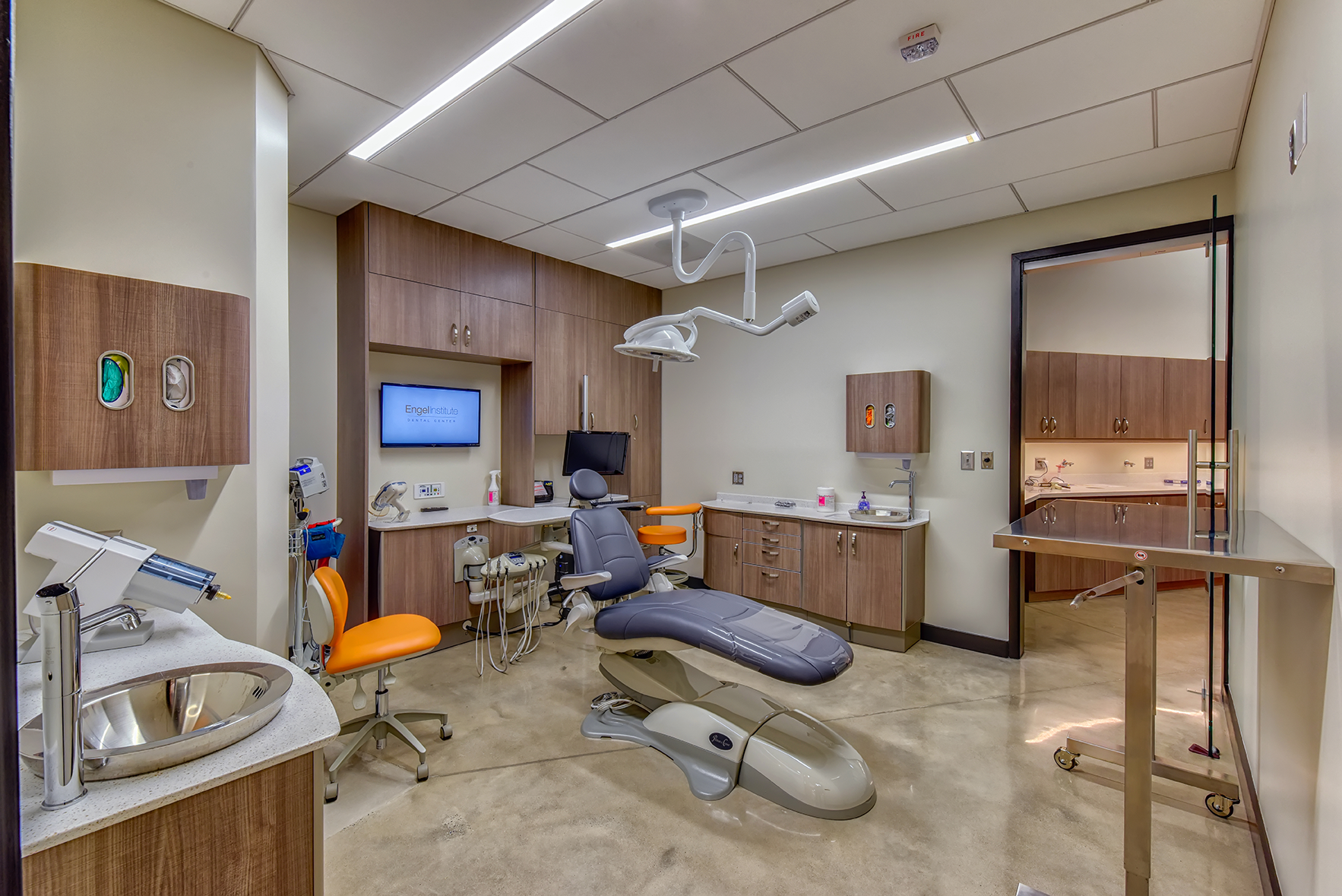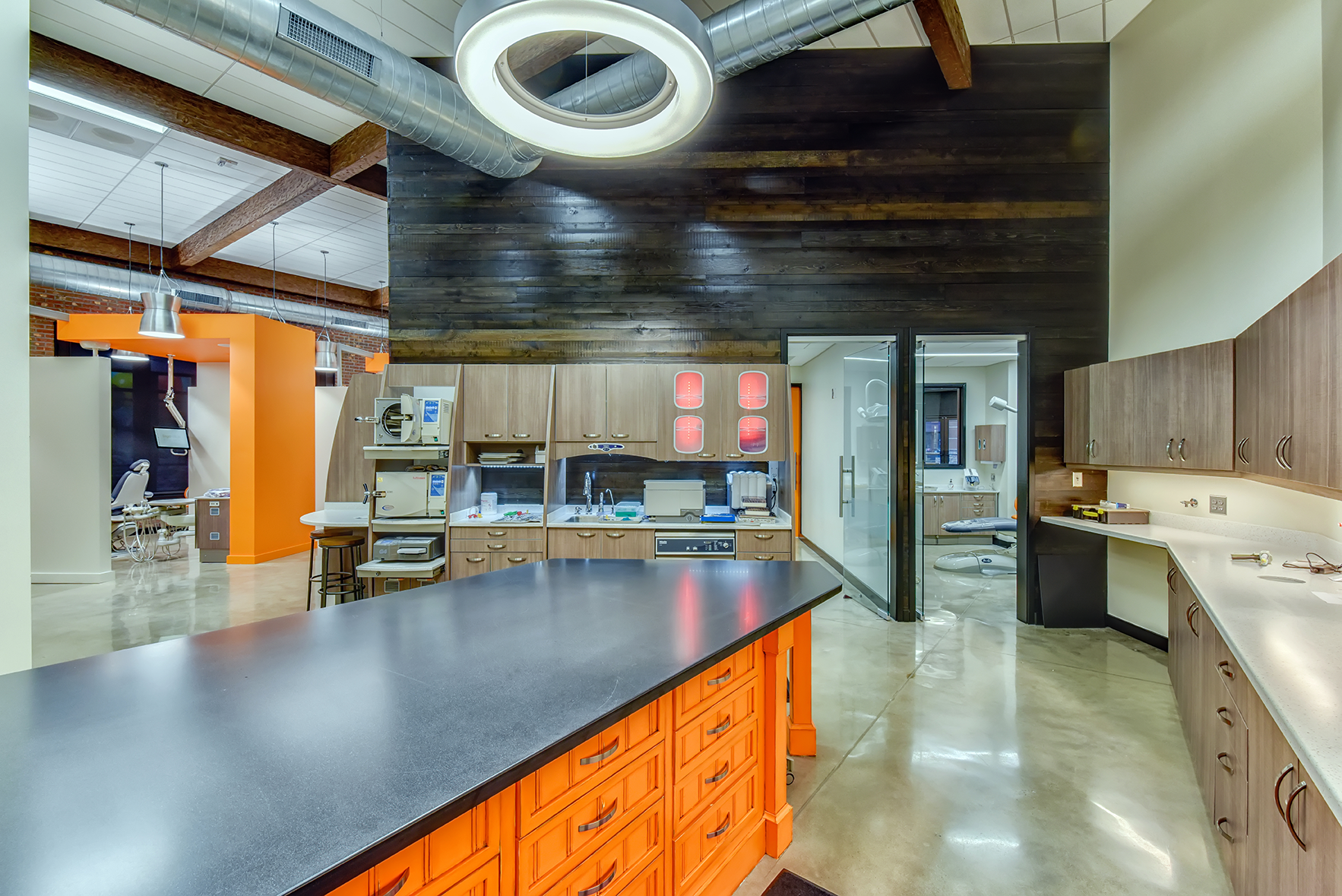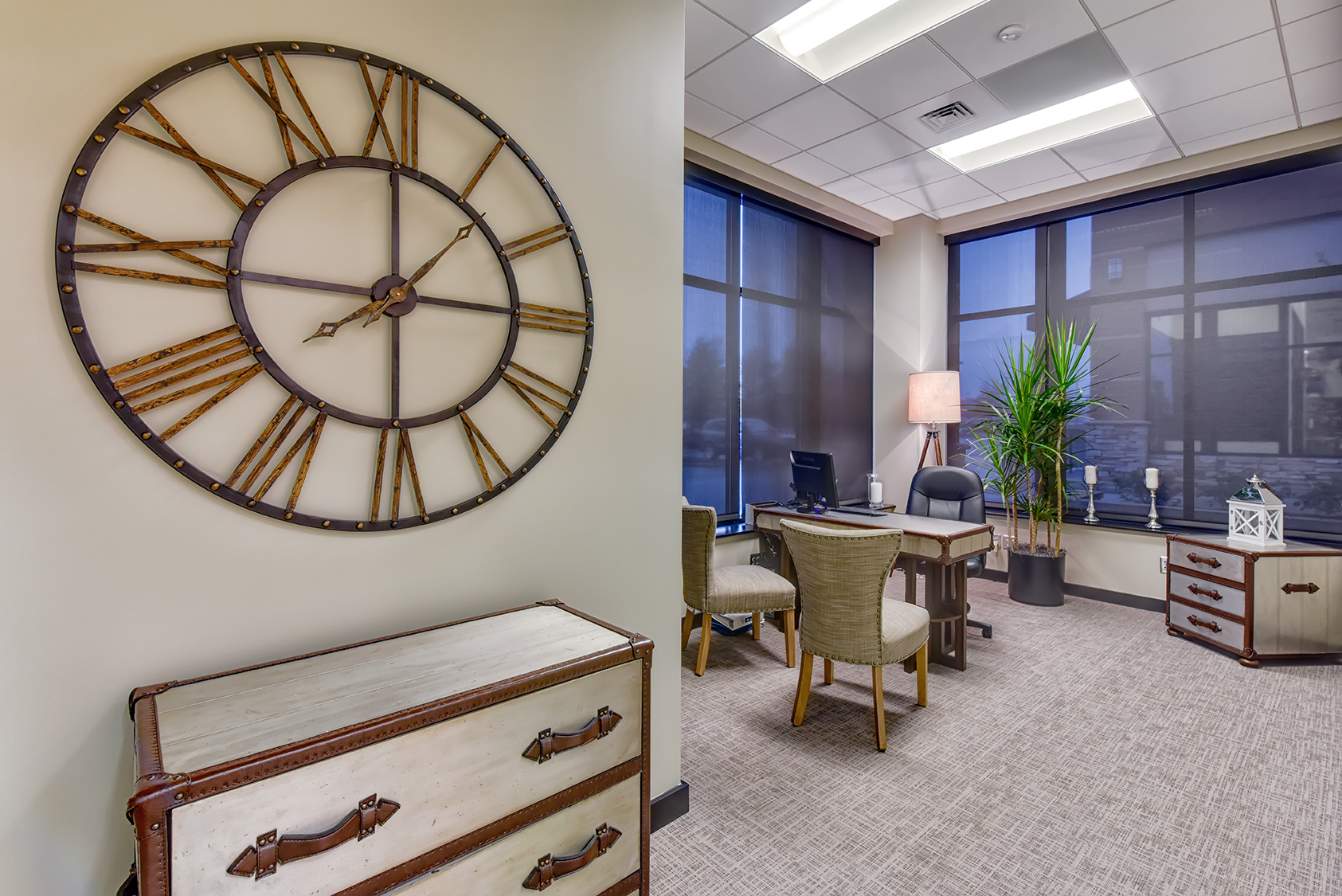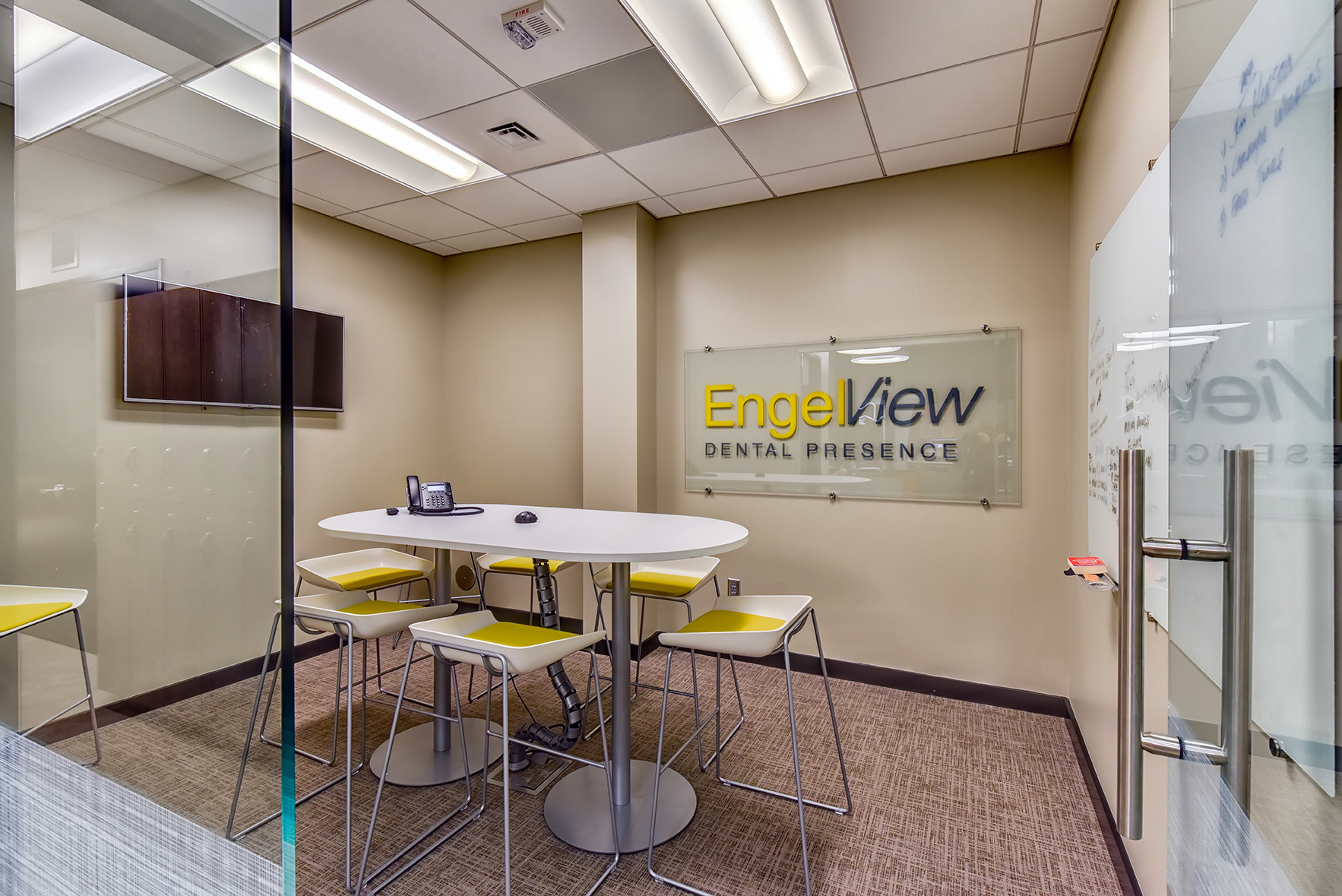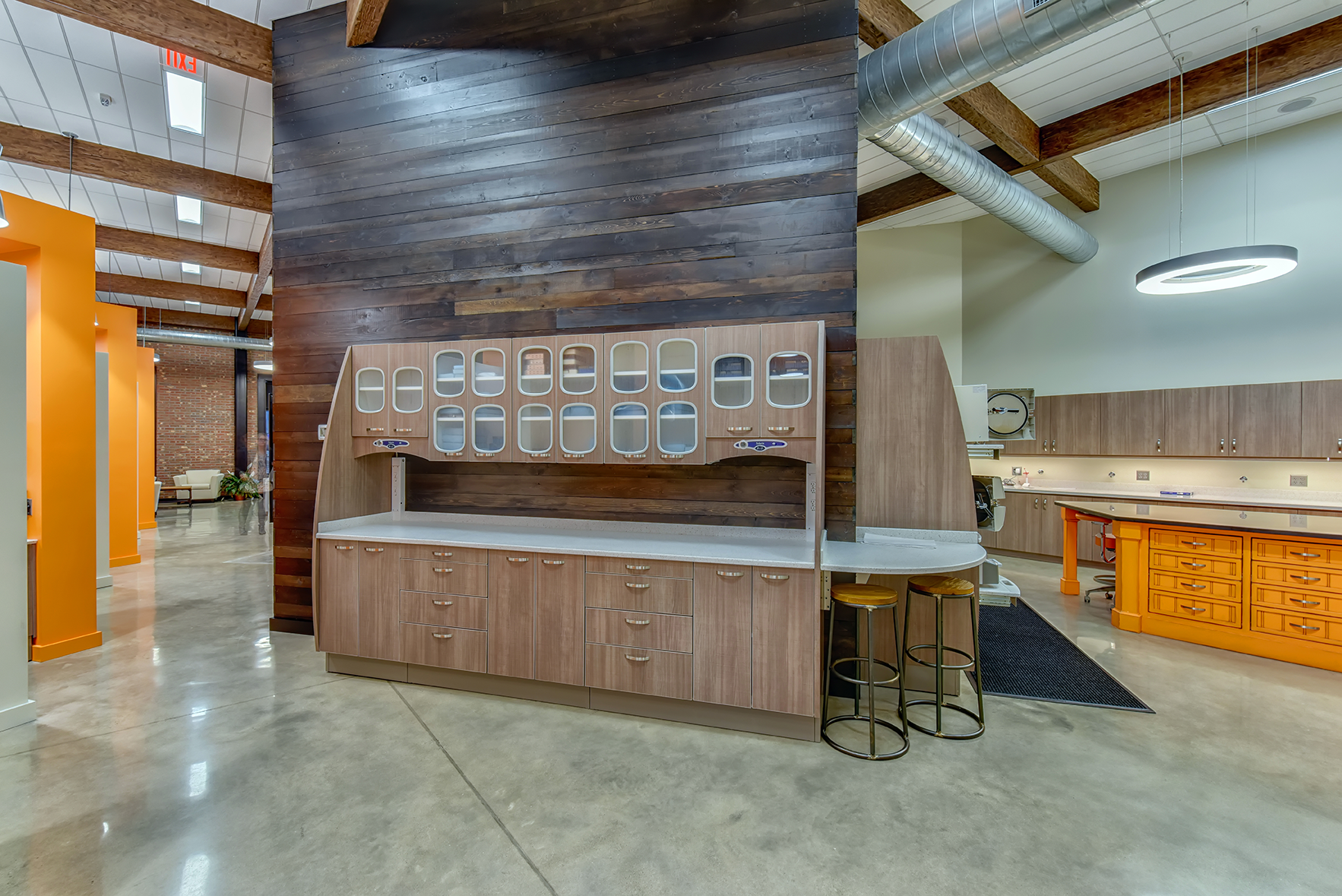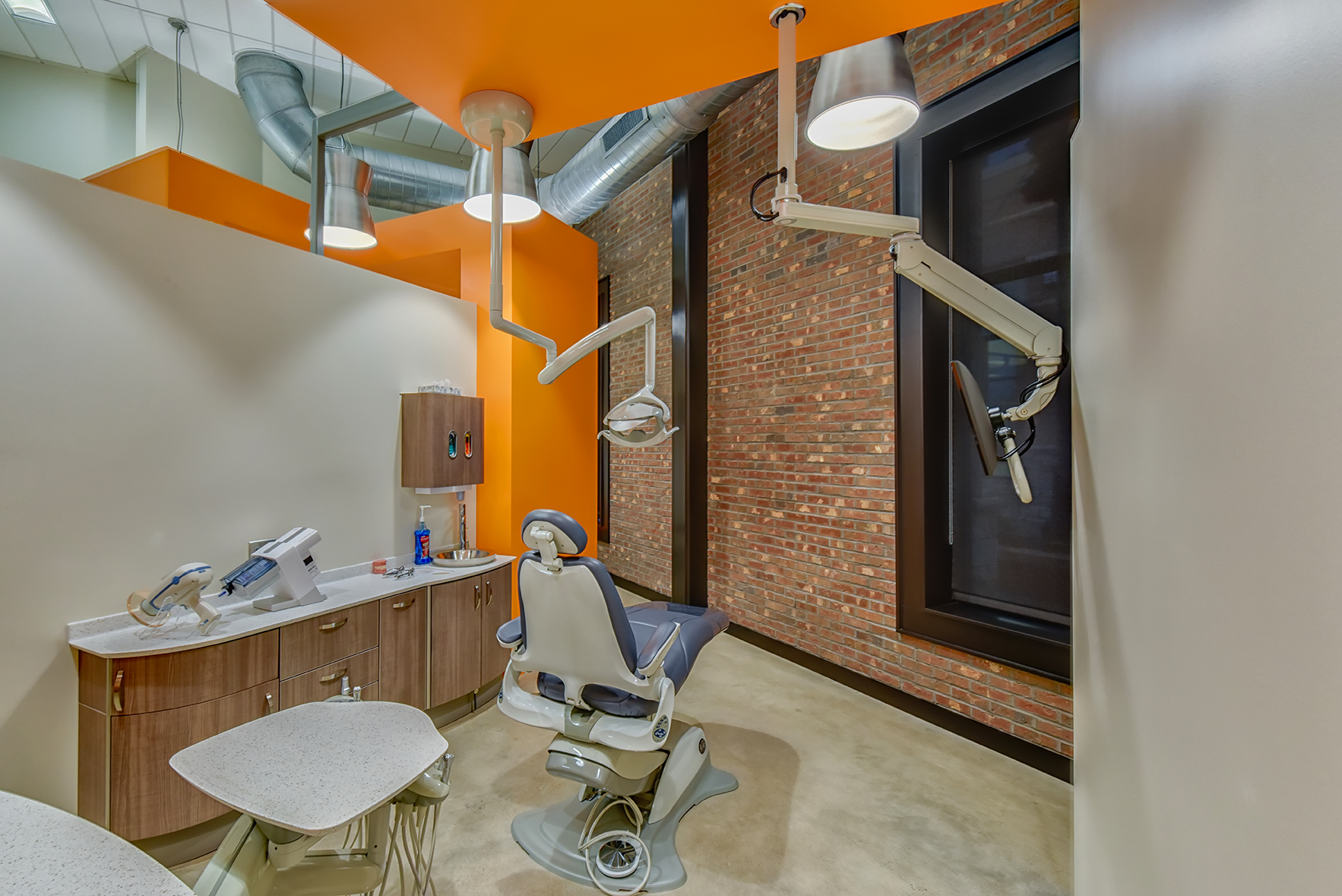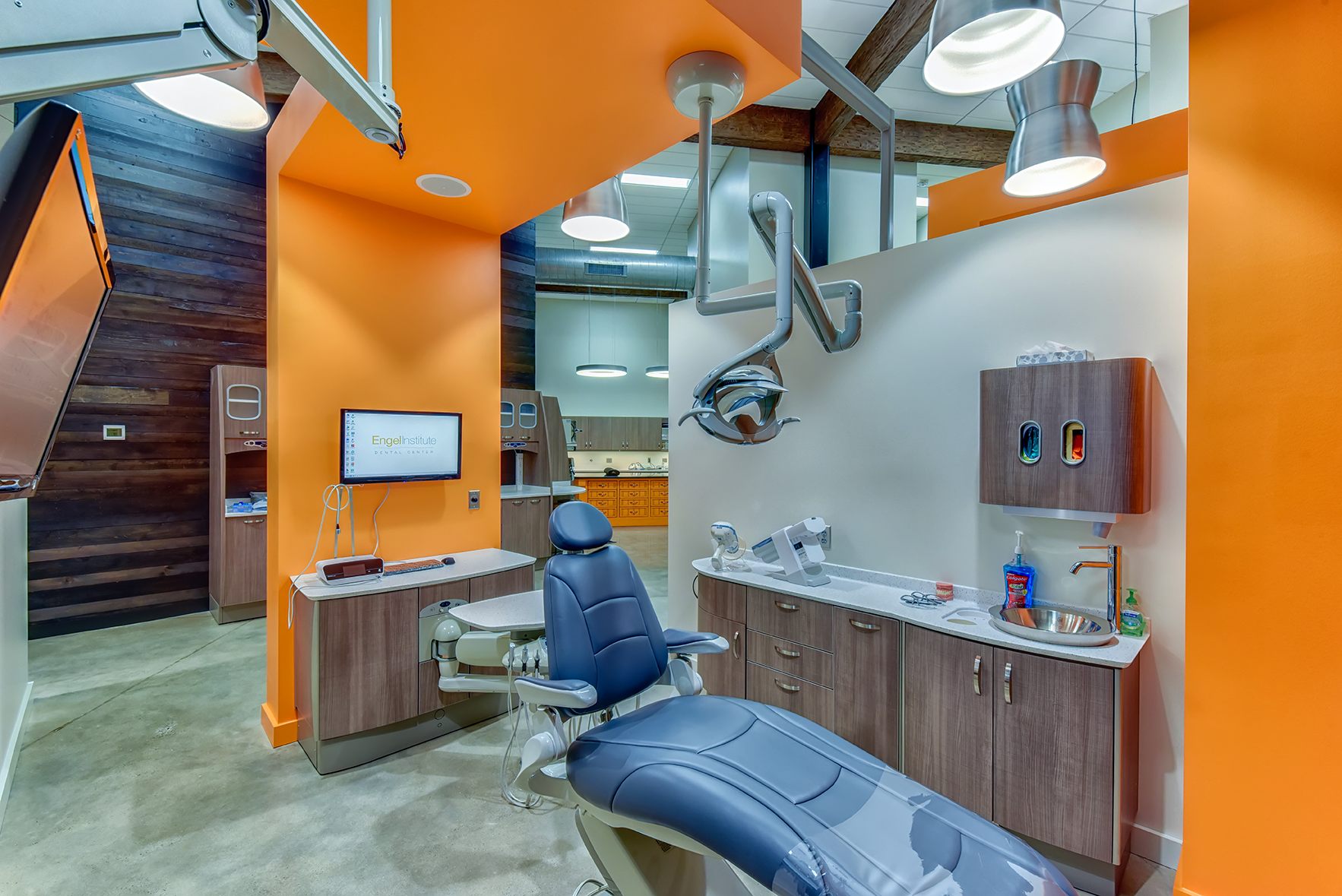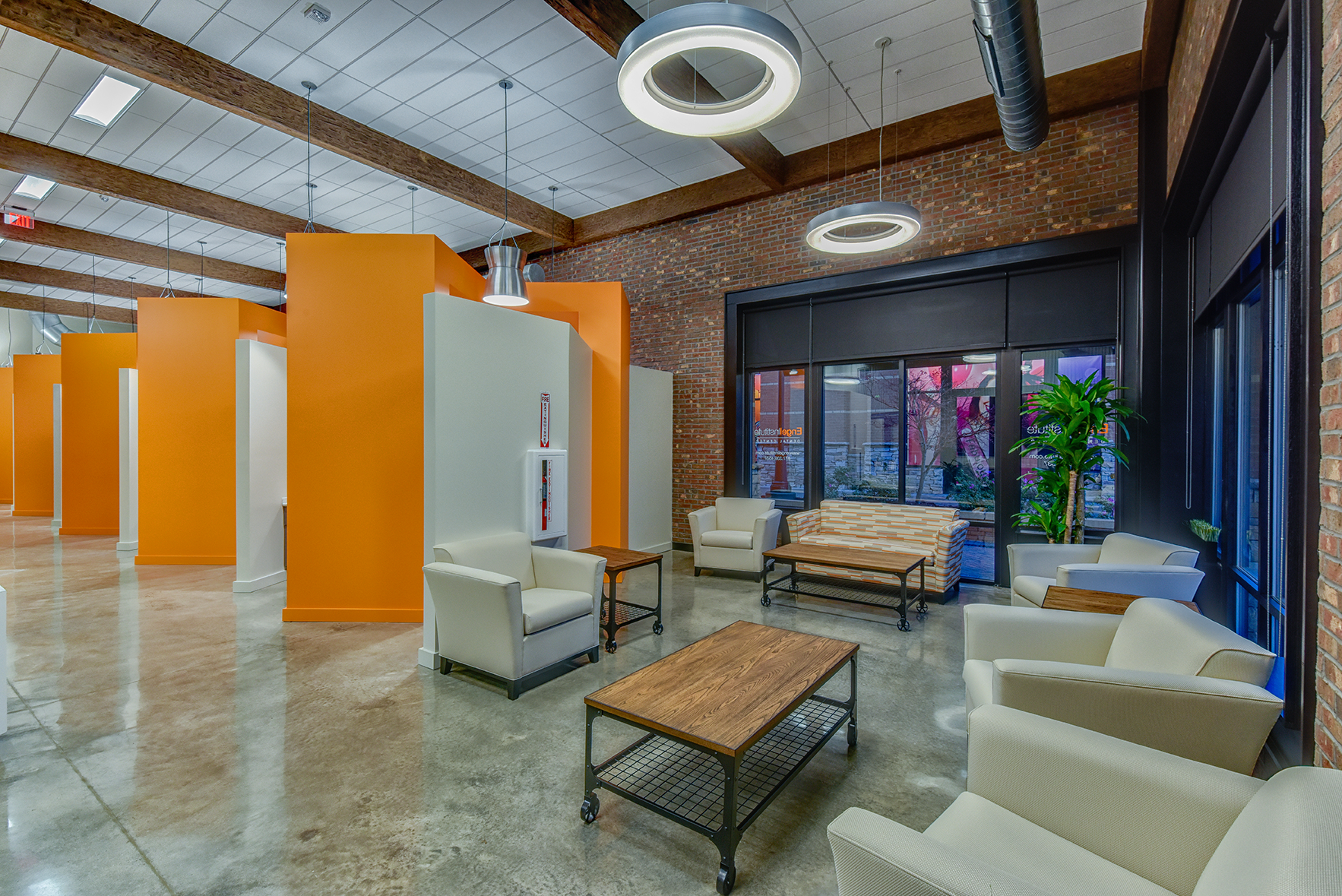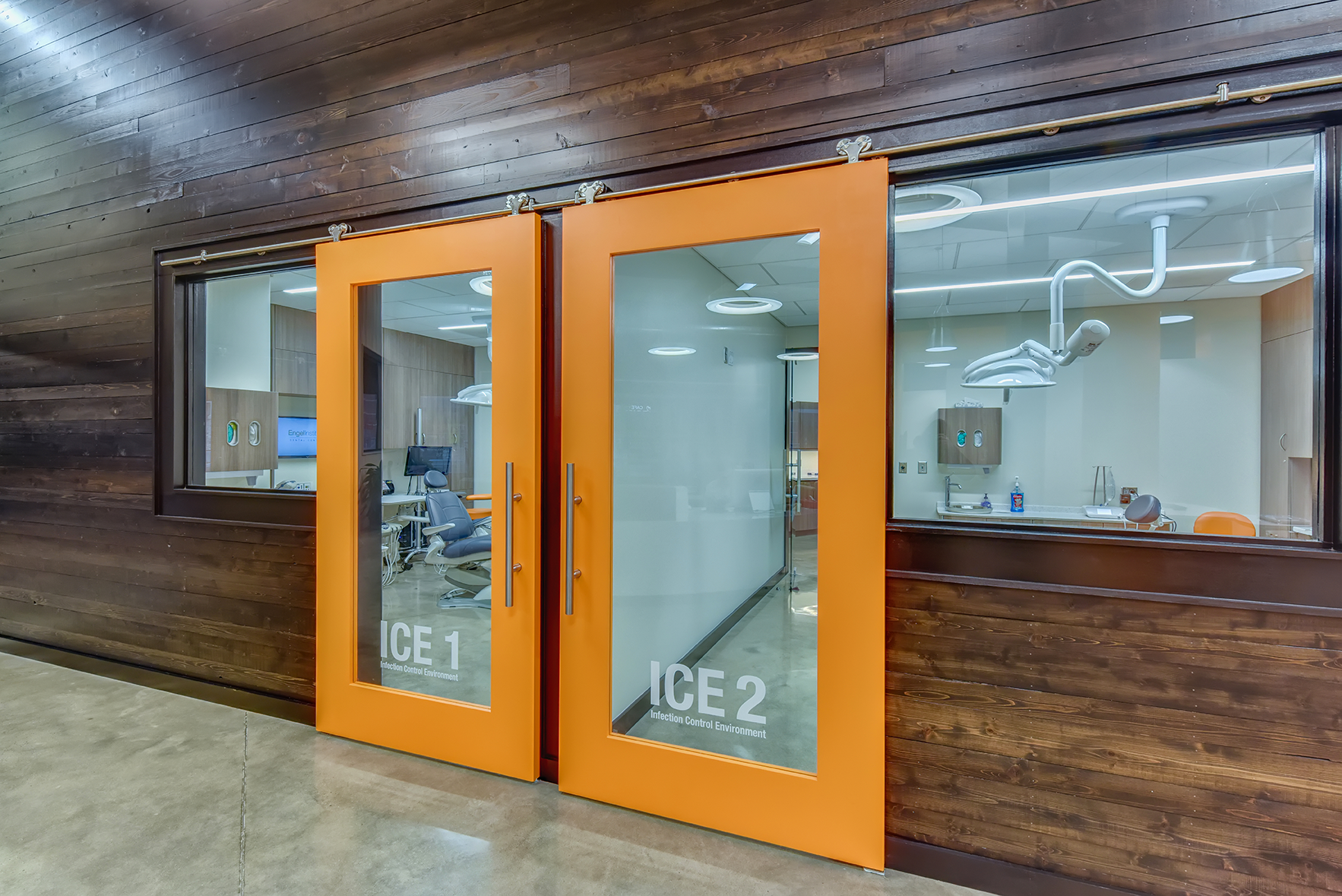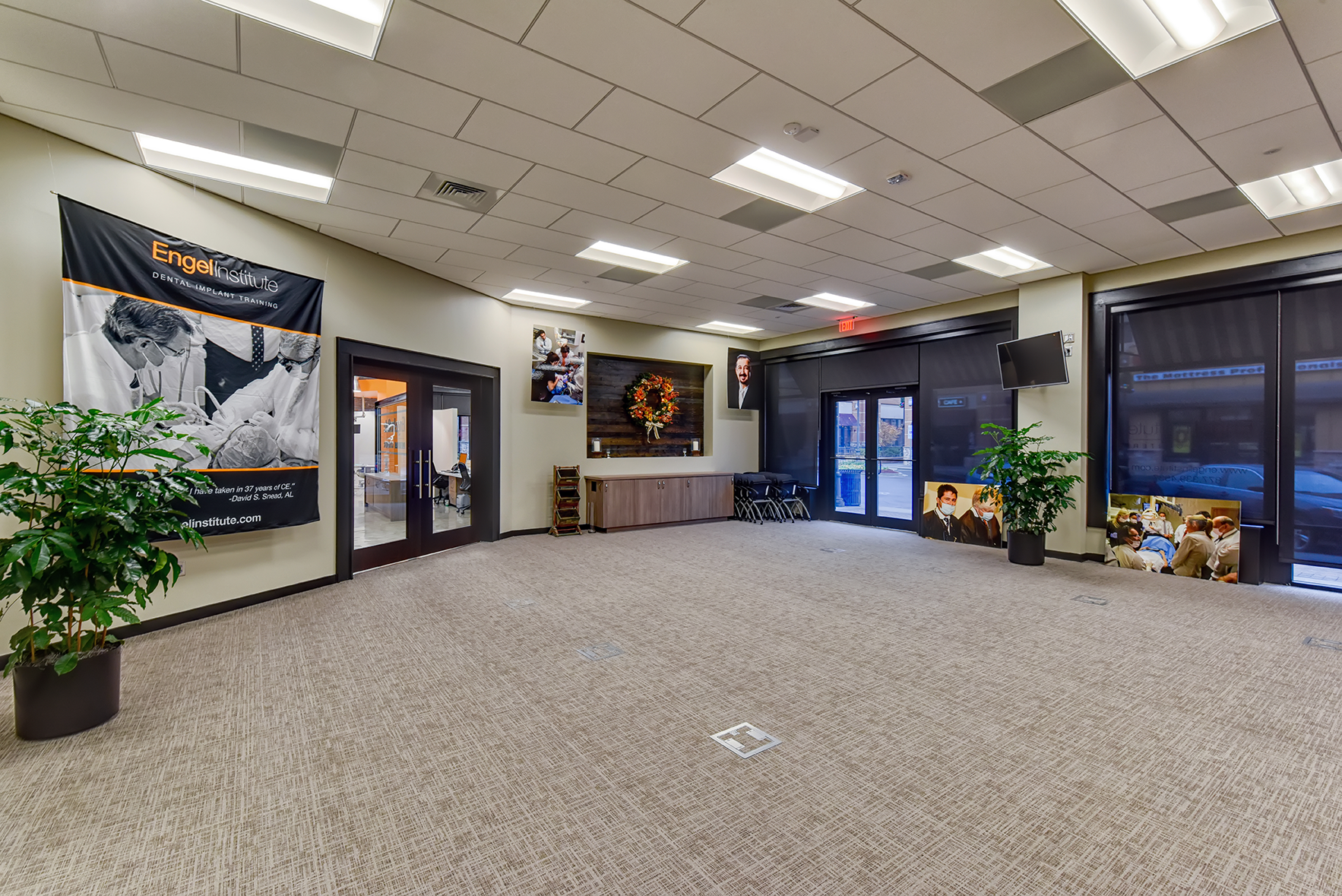Dr. Todd Engel
Charlotte, NC
Forward Design for a Leading Practice
In creating a hybrid space for patient care and education, Dr. Todd Engel found inspiration in environments that made patients smile.
“A year ago, this space was just four walls,” said Dr. Todd Engel with a smile, “7400 square feet of concrete blocks, some dirt and 12 support beams. From that, I built this.”
“This” is the Engel Institute – a first-of-its-kind hybrid space that offers education wrapped into a functioning, live dental practice. A dream six years in the making, it is unique in its ability to not only bring dentists into live dentistry, but into a fully functioning practice.
A space designed with a specific function and esthetics in mind, the Engel Institute is an example of how today’s dental practice is limited most by lack of imagination, not lack of budget.
Built to Lead
Knowing that the operatory space would be multi-functional – incorporating patient care and dentists into a learning environment – one of Dr. Engel’s first decisions was to build “oversized” operatories.
“I wanted an environment where people could actually be comfortable,” he explained. “In addition to maximizing the space, standardizing technology was also critical. This would help to avoid the need to move around sensors, X-ray units, and reduce any unnecessary shifting or movement. Each operatory is fully outfitted so that nothing leaves the room. This is smart as a teaching environment, and just as valuable as a private practice.”
Dr. Engel also realized that in the practice’s dual role, it wasn’t enough to have consistent equipment in each room; the caliber of the equipment was also crucial.
“More than anything, for the patient and for the students, I needed a certain level of reliability; the best that I could have. With the options before me, I chose Pelton & Crane,” he said. “The Narrow Back Advantage was a major selling point for me. One of the keys to performing good dentistry for an extended period of time is good ergonomics. The narrow back chairs allow for the best possible positioning of both the patient and doctor, allowing me to get closer to the patient without compromising their comfort.”
Dr. Engel recognizes that he is in a unique position to influence how other dentists think about their own space.
“Doctors come out of the lecture area and into the dental environment. They get to sit and experience our operatory space and they are completely blown away,” he shared. “Most dentists are focused on providing good dentistry — they’re not interior designers. The dynamic we’ve created here is able to offer some support and guidance for those who are considering a new direction for design.”
Designed for Comfort
Dr. Engel doesn’t have a degree in Interior Design, but he is a student of human behavior. In brainstorming about the look and feel for his new space, he found inspiration in environments outside of dentistry where people were actually enjoying themselves.
“I think dentistry is going through a paradigm shift in terms of design. For the longest time, dentists put a high value on the medical look, design that felt sterile,” he explained. “I was trying to find an environment where people meet, talk and enjoy one another — where was this happening? In my case, I found that experience in coffee shops. Every time I went into one, I found people conducting themselves the way that I wanted to see them behaving in a dental practice. When you walk into the Engel Institute, you realize that it is a dental facility, but it has a look that mirrors a coffee shop, creating a more inviting environment, rather than a medical or sterile environment that typically generates fear.”
The practice features what some might describe as an “industrial” look with tall, 18-foot ceilings, polished cement floors and exposed ducts and beams. Dr. Engel admits that it is very “forward,” but that’s the point.
“Never assume the patient won’t be okay with change. For my patients, they see that the design is forward, I’m forward, and my team is forward — taken together, it supports the idea that we are up-to-date on how dentistry should be done,” he said. “In my mind, the environment is proportional to the service patients will expect, and that means that even an old dirty rug is a reflection on the doctor. Conservative design – whether we like it or not – can suggest a conservative approach. For me, I want patients to see me as a dentist who is also an educator and someone who prides himself on implementing new treatments. I want the patient to see these things reflected in our physical space.”
The other aspect of the “forward” design is that, in Dr. Engel’s words, it feels like a “real person’s dental office,” not unlike a space where you would actually go in your free time.
“When the Pelton team first heard the concept, they thought it was cool, but brave. We were writing a new chapter in how dental offices are built. The team embraced it, even though the concept was so new. When it was finally done, I think we all felt this was something that would be great to see more of,” Dr. Engel said. “All of the Pelton people I worked with were enlightened, encouraging and supportive. We were all excited to see how it would come together.”
And now that this dream is a reality, Dr. Engel says that he has zero regrets.
“It’s like a wedding,” he laughed. “You can plan colors, arrange patches on a desk, imagine, get renderings, and convince yourself it is what you want. But when it comes to life, that’s your first opportunity to really see it. In my case, I was thrilled. I wouldn’t change a thing. My planning and what the Pelton team was able to do based on my vision, came together wonderfully and I am incredibly pleased.”
